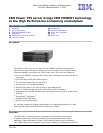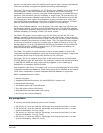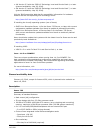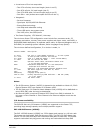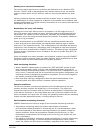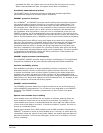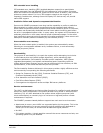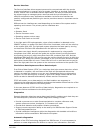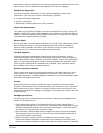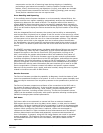
IBM United States Hardware Announcement
110-008
IBM is a registered trademark of International Business Machines Corporation
9
Service Interface
The Service Interface allows support personnel to communicate with the service
support applications in a server using a console, interface, or terminal. Delivering
a clear, concise view of available service applications, the Service Interface allows
the support team to manage system resources and service information in an
efficient and effective way. Applications available via the Service Interface are
carefully configured and placed to give service providers access to important service
functions.
Different service interfaces are used depending on the state of the system and its
operating environment. The primary service interfaces are:
• LEDs
• Operator Panel
• Service Processor menu
• Operating system service menu
• Service Focal Point on the HMC
In the light path LED implementation, when a fault condition is detected on the
POWER7 system, an amber FRU fault LED will be illuminated, which will be rolled up
to the system fault LED. The light path system pinpoints the exact part by turning
on the amber FRU fault LED associated with the part to be replaced.
The system can clearly identify components for replacement by using specific
component-level LEDs, and can also guide the servicer directly to the component
by signaling (turning on solid) the system fault LED, enclosure fault LED, and the
component FRU fault LED. The servicer can also use the identify function to blink the
FRU-level LED. When this function is activated, a roll-up to the blue enclosure locate
and system locate LEDs will occur. These LEDs will turn on solid and can be used to
follow the light path from the system to the enclosure and down to the specific FRU.
First Failure Data Capture and Error Data Analysis
First Failure Data Capture (FFDC) is a technique that helps ensure that when a fault
is detected in a system, the root cause of the fault will be captured without the
need to re-create the problem or run any sort of extending tracing or diagnostics
program. For the vast majority of faults, a good FFDC design means that the root
cause can also be detected automatically without servicer intervention.
FFDC information, error data analysis, and fault isolation are necessary to
implement the advanced serviceability techniques that enable efficient service of the
systems and to help determine the failing items.
In the rare absence of FFDC and Error Data Analysis, diagnostics are required to re-
create the failure and determine the failing items.
Diagnostics
General diagnostic objectives are to detect and identify problems such that they can
be resolved quickly. Elements of IBM's diagnostics strategy include:
• Provide a common error code format equivalent to a system reference code,
system reference number, checkpoint, or firmware error code.
• Provide fault detection and problem isolation procedures.
• Support remote connection ability to be used by the IBM Remote Support Center
or IBM Designated Service.
• Provide interactive intelligence within the diagnostics with detailed online failure
information while connected to IBM's back-end system.
Automatic diagnostics
Because of the FFDC technology designed into IBM Servers, it is not necessary to
perform re-create diagnostics for failures or require user intervention. Solid and



